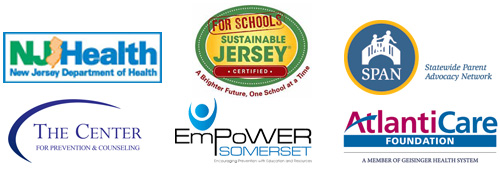The Whole School, Whole Community, Whole Child (WSCC) model unified ASCD’s Whole Child model with CDC’s Coordinated School Health model to provide a shared framework for school stakeholders to work together. As part of this process, the definitions and descriptions of each component were updated to reflect current evidence and practice. The school nutrition services component was expanded to include the nutrition environment and is now named: Nutrition Environment and Services.
Schools provide students with opportunities to learn about and practice healthy eating behaviors in three (3) main ways:
- The food and beverage offerings in the school cafeteria, school stores, concession stands and classrooms (used for parties and/or rewards); at vending machines and kiosks; or for school-wide celebrations and fundraisers.
- The nutrition education taught in the curriculum.
- The messaging used to promote healthy foods and good nutrition in the cafeteria and around the school campus.
Research studies have linked healthy eating to improved learning. Healthy eating also helps ensure students reach their life potential. The November 2015 Journal of School Health cited 14 reviews, 181 articles and 134 unique articles with published evidence demonstrating the association between nutrition behaviors and academic achievement. These findings are briefly summarized as follows:
- Student participation in school breakfast programs was associated with reduced absenteeism, increased academic grades and standardized test scores, decreased tardiness, improved on-task behavior, improved cognitive function and improved short-term behavior.
- Food insufficiency was associated with decreased attendance, lower standardized math scores, poorer cognitive functioning (eg, attention and memory) and increased likelihood of repeating a grade.
- Access to drinking water helped students increase water consumption. Maintaining adequate hydration is associated with improved cognitive functioning.
In addition, school gardens are a living classroom providing curricula content as simple as where food comes from, to lessons on nutrition and healthy lifestyles, to the more complex topics of ecology and resource management. Gardening helps students integrate the food cycle of planting, growing, harvesting, composting and recycling with other life cycles such as the water cycle and the cycle of the seasons. All these cycles link together in the planetary web of life. Lastly, school gardens provide an opportunity for the school to interact with the greater community.
In December 2015, the results of the 2014 School Health Policies and Practices Study (SHPPS) were released. This national survey is conducted every even numbered year to assess school health policies and practices as well as the characteristics of all the components of the WSCC model. Noteworthy trend results from 2012 to 2014, as well as a couple of new data points are given in the table below. Schools reported the following practices for the Nutrition Environment and Services component:
| SHPPS Statement | %2012 | %2014 | Change* |
|---|---|---|---|
| Using the School Health Index (SHI) or other self-assessment tool to assess school nutrition policies, activities and programs | 35 | 52 | ↑ |
| Serving non-fried vegetables | 32 | 41 | ↑ |
| Offering for purchase cookies, crackers, cakes, pastries or some other baked good, not low in fat | 28 | 37 | ↑ |
| Providing parents and families with health information designed to increase knowledge of nutrition and healthy eating during the current school year | 44 | 55 | ↑ |
| Collecting suggestions from students, families, & school staff on nutritious food preferences & strategies to promote healthy eating | 75 | 66 | ↓ |
| Planting a school food or vegetable garden | n/a | 35 | |
| Serving locally or regionally grown foods | n/a | 40 |
*Green– positive trend
Red – negative trend

The New Jersey Department of Health’s regional school health grantees partner with Sustainable Jersey for Schools to offer a competitive grant for schools to implement evidence-based or best practice health and wellness actions. Three (3) of these actions lie in the Nutrition Environment and Services component:
- Implement a Breakfast After the Bell program
- Offer Health Food Choices, including Access to Free Drinking Water
- Grow or Expand a School Garden
The next cycle of Sustainable Jersey for Schools, Health and Wellness Grants, funded by the New Jersey Department of Health, is expected to be announced on or about February 23rd. Approximately, thirty $4,000 grants will be awarded. For more information, visit www.sustainablejerseyschools.com.




